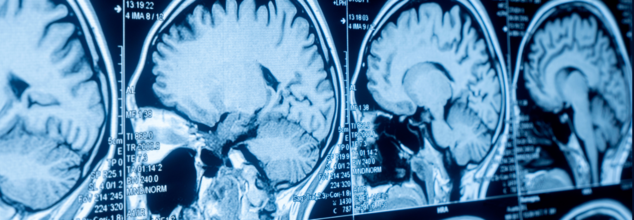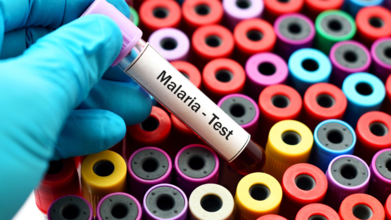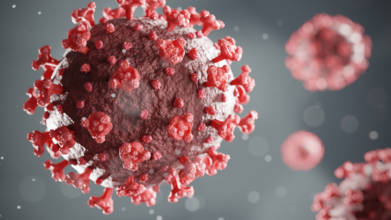- Health Conditions A-Z
- Health & Wellness
- Nutrition
- Fitness
- Health News
- Ayurveda
- Videos
- Medicine A-Z
- Parenting
- Web Stories
Breakthrough Study Reveal What Triggers Huntington's Disease- Scientists Find New Answers

Image Credit: Canva
Huntington's disease is a rare, inherited neurological disorder that affects individuals at the peak of their lives, causing permanent damage to brain cells and progressively affecting movement, cognitive functions, and behavior. It is an incapacitating disorder without cure, although its genetic cause has been identified for many decades, scientists have been struggling with the mechanism by which it manifests in people carrying the mutation since birth but remains symptom-free until adulthood.
Recent studies have unveiled how Huntington's disease is triggered. They explain the mechanism by which an apparently latent genetic mutation becomes a killer.
Huntington's disease is essentially caused by a genetic mutation in the HTT gene, which codes for a protein called huntingtin. The mutation consists of the abnormal repetition of a three-letter DNA sequence, CAG, within the gene.
In healthy individuals, the CAG sequence is repeated 15 to 35 times. People with Huntington's disease have more than 40 repeats. This excess leads to the production of a defective huntingtin protein that becomes toxic over time.
But here’s the twist: this mutation doesn’t wreak havoc immediately. For years, even decades, it remains relatively harmless. Scientists have now discovered that the mutation grows progressively, expanding the number of CAG repeats over time. When the count surpasses a critical threshold—about 150 repeats—certain neurons become overwhelmed, triggering cell death and the onset of symptoms.
How the Mutation Grows Over Time and Cause Brain Damage?
Breakthrough research done by scientists from the Broad Institute of MIT and Harvard, McLean Hospital, and Harvard Medical School has mapped out the expansion of this mutation in exquisite detail. Analyzing the brain tissue from those with and without Huntington's disease, they discovered how the mutation evolves.
Slow Start
For the first two decades of life, DNA repeats expand slowly and do not pose an immediate threat.
Fast Forward
At about the 80-CAG mark, expansion increases its pace and then it starts the chain reaction of toxic effects.
Critical Point
Above 150 or more repeats the mutation causes the neurons to start sickness and eventually die, giving the hallmark symptoms of Huntington's disease.
According to co-senior author Dr. Steve McCarroll, these results are "surprising," in that they showed a direct relationship between the size of the repeats and the age at which the disease began. In fact, it has been greeted with skepticism within the scientific community, as prior studies had suggested that smaller expansions were enough to cause the disease. However, new information debunks that any expansions under 100 CAGs may involve a higher risk but does not drive the full onset of Huntington's.
What is Huntington's disease?
Huntington's disease is a genetic disorder that progressively leads to the death of brain cells. It primarily affects regions of the brain responsible for voluntary movement and memory. Individuals with Huntington's often experience symptoms such as uncontrollable movements, along with significant changes in thinking, behavior, and personality. Over time, these symptoms progressively worsen, severely impacting quality of life.
Symptoms of Huntington's disease
Symptoms of Huntington's disease appear between the ages of 30 and 50 and worsen gradually over a period of 10 to 25 years. The disease affects physical and mental functions, causing: Involuntary movements (chorea)
- unsteady gait
- poor coordination
- Difficulty concentrating
- memory loss
- poor judgment
- Irritability
- depression
- personality changes
- eventual loss of independence
The severity of these symptoms impairs the quality of life for a person and his or her family, thus placing a premium on finding effective treatments.
What Does This Mean for Huntington's disease Treatment
While a broadening understanding of Huntington's disease, the current treatments available are essentially symptomatic. The drugs are capable of alleviating any movement disorders and mood alterations but don't alter the process of the disease progression.
Experimental drugs aimed at reducing the amounts of toxic proteins have had little success in human trials, mainly because at any one time, only relatively few cells express the poisonous version of the huntingtin protein. But a new study holds out a potential hope, the possibility of intervening before a DNA repeat becomes pathogenic.
Dr. McCarroll and his team believe that slowing or stopping the expansion of CAG repeats could delay or even prevent the onset of Huntington's disease. Although this approach remains experimental, it has already spurred renewed interest among pharmaceutical companies to develop therapies aimed at stabilizing the mutation.
About 41,000 Americans currently live with the disease, though tens of thousands more are expected to be afflicted because Huntington's is a genetic disorder. Discoveries such as these provide an inkling of hope for affected families, uncertain about their situations.
While there is no guarantee that stopping the expansion of CAG repeats will cure Huntington's, this research is a significant step toward understanding the disease at its molecular level. Scientists are optimistic that these findings could pave the way for preventive treatments that protect vulnerable neurons from succumbing to the toxic effects of the mutation.
As Dr. Sabina Berretta, a senior author of the study, noted, "The longer the repeats, the earlier in life the onset will happen." Armed with this knowledge, researchers are now better equipped to explore interventions that could delay the devastating symptoms of Huntington's disease and, perhaps, one day prevent them entirely.
Huntington's disease remains one of the major challenges; however, scientific research has given tremendous insights into what the real roots of the condition are. Thus, researchers open new doors toward treatments that might change the path of this devastative condition with the knowledge about how the mutation evolves and comes to a tipping point.
Long somatic DNA-repeat expansion drives neurodegeneration in Huntington’s disease. Cell. 2025
Delhi Malaria Cases Increase, Highest Number Of Cases In 5 Years

(Credit-Canva)
After a day of heavy rain, Delhi is facing a serious health concern, a sharp rise in mosquito-borne illnesses. With waterlogged streets and poor drainage, malaria cases have hit a five-year high. According to the latest data, 135 cases were reported from January 1 to August 2, marking the highest number for this period in the last five years.
What Areas In Delhi Are Seeing A Rise In Malaria Cases?
The city of Delhi is seeing a worrying increase in malaria cases. The West Zone of the city has been hit the hardest, with 30 confirmed cases. This recent data comes from different parts of Delhi, including areas managed by the New Delhi Municipal Council, Delhi Cantt, and Indian Railways.
As of August 2nd, the number of malaria cases has been growing year after year, with this year’s total of 135 cases being the highest in the last five years for the same period. City officials say this is happening because of a "perfect environment for mosquitoes to breed." They have found that common places where mosquitoes are growing include water-filled coolers, flower pots, drums, and even old tires left on rooftops.
Vector-Borne Diseases Also a Concern
Malaria is a serious, life-threatening disease common in tropical countries. It is spread to people through the bite of certain types of infected mosquitoes. The good news is that malaria is both preventable and curable. Unfortunately, malaria isn't the only mosquito-related problem. Two other diseases carried by mosquitoes are also on the rise:
Chikungunya: So far this year, there have been 20 cases. The West and Central Zones of the city have each reported five cases. This is a noticeable jump from previous years, with a total of 267 cases reported in all of 2024.
Dengue: The city has also seen 291 cases of dengue. The Central Zone has the most cases, with 39. Last year, 11 people sadly died from this disease.
To fight this problem, health officials have been inspecting homes. They've found that mosquitoes are breeding in over 100,000 houses and have sent out around 76,000 legal notices to residents to clean up these spots.
Why Should Malaria Be A Cause Of Concern For People?
According to IJID Regions journal, Malaria remains a significant health challenge in India, with about 1.3 billion people at risk and over 180,000 cases reported in 2022. The Indian government has been working hard to control and reduce the number of malaria cases. This report looked closely at these efforts and found that several programs have been successful.
The Urban Malaria Scheme, which focuses on 131 cities, and the Intensified Malaria Control Project, which targets seven high-risk areas, have both been very effective.
A newer plan, the National Framework for Malaria Elimination, has also helped reduce cases in states like Odisha, which was once a major hotspot for the disease.
How to Stay Safe from Malaria?
If you think you have malaria, it's essential to get tested right away with a simple blood test. Early treatment can stop a mild case from becoming severe. Doctors will prescribe specific medicines based on the type of malaria and the person's age and health.
A major challenge in fighting malaria today is that the parasites and mosquitoes are becoming resistant to our medicines and insecticides. Scientists are working on new solutions, like new-generation mosquito nets and updated treatment plans, to combat this resistance and keep the disease under control.
You can protect yourself from malaria by avoiding mosquito bites and taking special medication, especially if you are traveling to an area where malaria is common. To avoid mosquito bites:
- Use mosquito nets when you sleep
- Wear protective clothing like long sleeves and pants.
- Use mosquito repellent on your skin.
- Install screens on your windows and doors.
Surge in ‘Stratus’ Covid-19 Cases in the US: CDC Report Says, What Are The Symptoms?

(Credit-Canva)
The spread of COVID-19 is picking up speed this summer in the US. The key indicator of the virus shows that it's becoming more active, according to the latest data released by the Centers for Disease Control and Prevention (CDC).
How Are The Levels Of COVID Being Measure?
The CDC has a great way of tracking viruses: by checking our wastewater. This is a very helpful tool because it can find signs of the virus spreading in a community even before people start feeling sick and go to the doctor. In a recent update, the CDC reported that the amount of COVID-19 found in wastewater across the country has gone up from a "low" level to a "moderate" level.
This is a clear sign that the virus is becoming more common. The data also shows that the highest levels of the virus are currently in the Western part of the country. States like Alaska, California, Colorado, Nevada, and Utah are seeing the most activity. If you live in one of these areas, it's a good idea to be a little more careful, as the risk of getting infected is higher.
Other data also confirms the increase in cases. As of Tuesday, the CDC estimates that infections are growing or likely growing in 45 states, a jump from 40 states the previous week.
This late-summer rise is being driven in part by a new variant, XFG, or "Stratus," which is now the third-most common strain in the U.S. The variant was first found in Southeast Asia in January but didn't become a major presence in the U.S. until May. By late June, it was estimated to account for up to 14% of cases.
What Is The Current Strain Of COVID Affecting The US?
The World Health Organization explains that a new COVID-19 variant, called XFG, is now being watched closely by health experts around the world. Gavi vaccine alliance explains that Two new variants are now getting attention from scientists: NB.1.8.1, nicknamed "Nimbus," and XFG, nicknamed "Stratus."
Both variants are spreading very quickly. Since early 2025, they have spread across the globe. For example, XFG accounted for 25% of cases in Europe by late May, while NB.1.8.1 was at 11% in late April.
However, despite their rapid spread, experts say there's no evidence that these variants cause more severe illness, hospitalizations, or deaths than other versions of the virus.
XFG ("Stratus") is good at evading our immune system. It has specific mutations that help it dodge antibodies, making it harder for our bodies to fight off. However, it doesn't seem to be as good as NB.1.8.1 at infecting cells.
Is Stratus COVID Strain Dangerous?
WHO explains that the number of XFG cases is rising around the world. It’s now found in 38 countries and is growing quickly, especially in parts of Asia, the Americas, and Europe. In some countries, like India, XFG has become the main variant.
Despite this increase, experts believe the global risk of XFG is low. Early data suggests that this variant doesn’t cause more severe illness or lead to more deaths than other variants currently spreading.
Do Vaccines Work for Stratus COVID Strain?
Experts believe that the current COVID-19 vaccines will still be effective against XFG. They are expected to protect people from getting seriously sick or needing to go to the hospital.
While some countries in Southeast Asia have seen more cases and hospitalizations at the same time as XFG became more common, it's not clear if the variant itself is causing this. It's too early to say for sure how big this new wave of cases will get.
What Are The Key Symptoms of Stratus?
Doctors have reported that a standout symptom some patients with XFG have experienced a "hoarseness" feeling of scratchiness in their throat. Other symptoms include common issues like fever, chills, dry cough, fatigue, muscle ache, nasal congestion, nausea, vomiting or diarrhea.
Although XFG is spreading quickly, it doesn't appear to be more dangerous. The WHO continues to monitor them closely to see if that changes.
Friendly’s Ice Cream Recall: Vanilla Bean Packs Hid Cookies & Cream with Undeclared Soy, Wheat; Know How These Allergens Can Be Life-Threatening

DFA Dairy Brands, LLC has recalled 324 cartons of Friendly’s 48 fl. oz. Cookies & Cream ice cream after they were incorrectly packaged in Vanilla Bean cartons that did not list soy and wheat as ingredients. The U.S. Food and Drug Administration (FDA) warned that people with allergies to soy or wheat risk serious or potentially life-threatening reactions if they consume the product.
The recalled products, stamped with a best-by date of November 26, 2025, made their way to stores in Maryland, Virginia, and Pennsylvania.
This Is Not Just a Label Problem
Food allergies are not a matter of mild inconvenience. For some, they can be deadly. If you are allergic to soy or wheat, even a small amount can trigger a cascade of immune system alarms. And in the wrong scenario, that can escalate to anaphylaxis, which is about as far from a carefree ice cream moment as you can get.Wheat Allergy
According to the Mayo Clinic, a wheat allergy occurs when the immune system reacts abnormally to proteins found in wheat. Symptoms can surface within minutes to hours after consumption and include swelling or itching of the mouth or throat, hives, nasal congestion, stomach cramps, diarrhoea, and, in severe cases, anaphylaxis.Wheat can hide in places you would not expect, from soy sauce and hot dogs to ice cream. It is also possible for some people to only react if they exercise within a few hours of eating wheat, a rare but dangerous condition known as wheat-dependent, exercise-induced anaphylaxis.
If you are allergic, your best defence is total avoidance, which sounds simple until you discover wheat proteins lurking in crackers, couscous, natural flavourings, and even certain cosmetics.
Soy Allergy
Soy allergies, according to the Cleveland Clinic, can hit anyone, anytime, even if you have enjoyed soy products before without an issue. It is more common in infants and children, though some grow out of it.
Reactions can be fast (IgE-mediated) or delayed (non-IgE-mediated). Quick reactions can trigger symptoms like hives, tightness in the throat, coughing, nausea, or anaphylaxis—a rapid, potentially fatal drop in blood pressure and breathing capacity. Slower reactions might mean stomach cramps, indigestion, or skin irritation over hours or days.
And soy is everywhere: tofu, soy sauce, vegetable broth, miso, protein powders, nut butters, and yes, even some ice creams. Avoiding it takes a sharp eye on labels, which is why a misprint like this is more than a minor oversight.
Anaphylaxis in the Middle of Dessert
For both soy and wheat allergies, the most alarming possibility is anaphylaxis, a sudden, severe reaction that can cause throat swelling, chest tightness, breathing difficulty, and even loss of consciousness. It is a medical emergency requiring immediate and urgent hospital care.Why This Recall Matters
Food recalls happen for many reasons—contamination, spoilage, foreign objects—but allergen mislabeling is particularly serious. Unlike bacteria, allergens do not disappear with cooking or freezing. If the label does not warn you, there is no way to tell just by looking, smelling, or tasting.For manufacturers, this case is a stark reminder that packaging checks must be airtight. For consumers, it is proof that allergen vigilance is not optional. Double-checking labels, even on trusted brands, can make the difference between a safe snack and a health crisis.
If You Bought the Affected Ice Cream
The FDA advises that anyone with the recalled Friendly’s cartons should not consume the product. Instead, they can return it to the store for a full refund. If you have already eaten it and have an allergy to soy or wheat, monitor for symptoms and seek medical attention immediately if any reaction develops.© 2024 Bennett, Coleman & Company Limited

